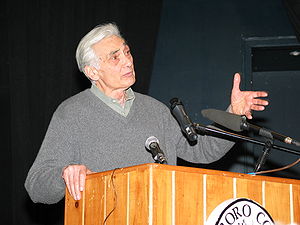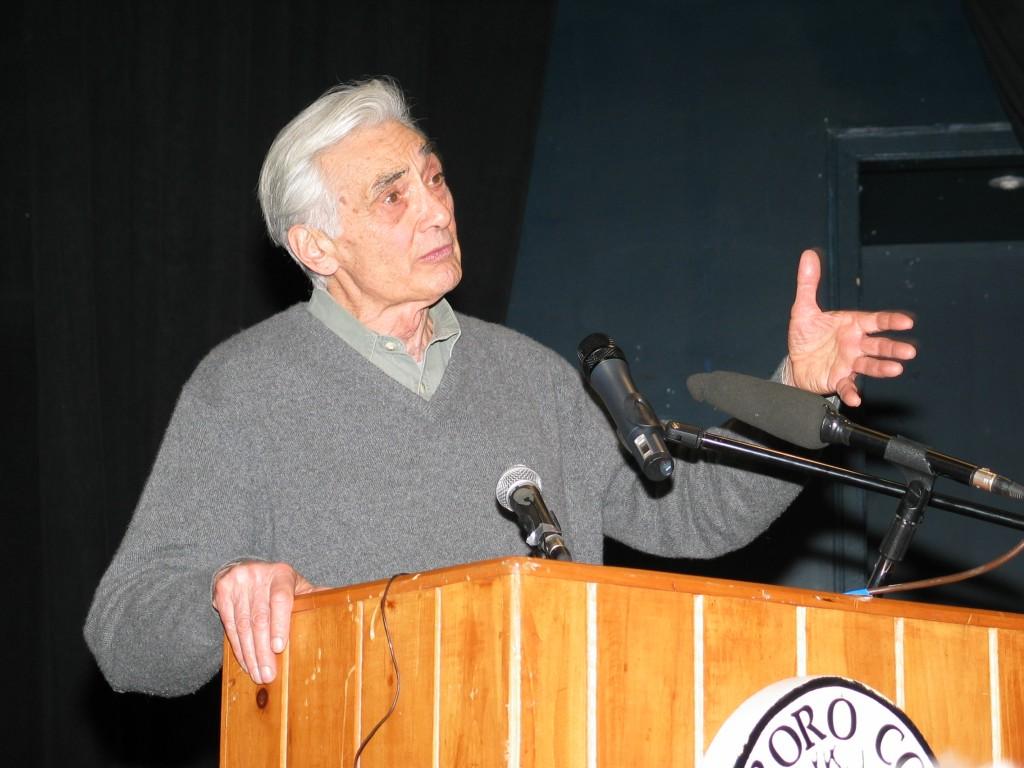
- Image via Wikipedia
For many people Howard Zinn stood out only for his unusual last name. Some students may remember “that radical historian, or was he a communist?” they read for a day – and then forgot. But for others Howard Zinn, historian and author of A People’s History of the United States, will be remembered long after his works are out of print.
The legacy of Zinn, generally regarded as one of the greatest scholars of the 20th century, extends far beyond words on paper.
Zinn’s people’s history, and before that his tenure as Professor of Political Science at Boston University, addressed history from the all too under-represented viewpoint of the minority, be that of women, African-Americans, Asian-Americans, or American Indians.
In 600 pages he covered over 500 years of American history, a history filled with social injustices, political suppressions, and war-consumed presidencies. It is a history uncommon in most high school textbooks, but critical to understand.
U.S. History teacher Cathy Schager had the privilege of meeting Zinn in 2003 at the Organization of American Historians.
At the convention, Schager said, Zinn opened the floor up for questions.
“I asked whether there could be a humanitarian war,” she said. “His response was that he was intolerant of all wars.”
True to his nature, Schager said, Zinn’s response was idealistic, hopeful.
But in her history classes, Schager sees how affected students are after reading Zinn.
“Every year there was a similar reaction,” she said. “For a lot of kids it was a bit hostile. There will always be a handful that are shocked, just taken back. Many are defensive. As time passes, though, and we go into the treatment of women, they are much less defensive.”
In fact, by the end of the school year, Schager explained, many become open to Zinn’s work.
“It’s kind of like the phrase that everyone is a liberal until they get their first pay check,” she said. “At the end of the day, it is not like there is a petticoat revolution, but at the very least their eyes are opened to problems they didn’t know about.”
For students, Zinn offers an uncommon point of view.
Austin Alianello ’12, although self-described as “more conservative,” read Zinn in his U.S. History/English Collaboratory class and acknowledged the need for opposing viewpoints.
“He definitely had a different point of view than we were taught,” Alianello said, adding that “school should always present both sides of an issue.”
Alianello also was impressed by Zinn’s research.
“In order to have such a strong opinion and the way he was able to quote different documents, it’s kind of amazing that he was able to do this,” he said.
Ultimately, it is this research that makes Zinn’s people’s history so powerful. While seemingly endless at points, it also adds color to the narrative, meaning to his words.
Of course, Zinn was a radical. But he didn’t hide his bias. He was writing for the people, for students unaware of our nation’s darker truths.
“The most important thing he brought to them was an initial shock, and, whether they want to believe him or not, the broadening of viewpoints,” Schager said.
















































Dan Woog • Feb 28, 2010 at 12:48 pm
An excellent, thought-provoking piece. This is high school journalism at its best: taking national news, making it relevant, local — and interesting.